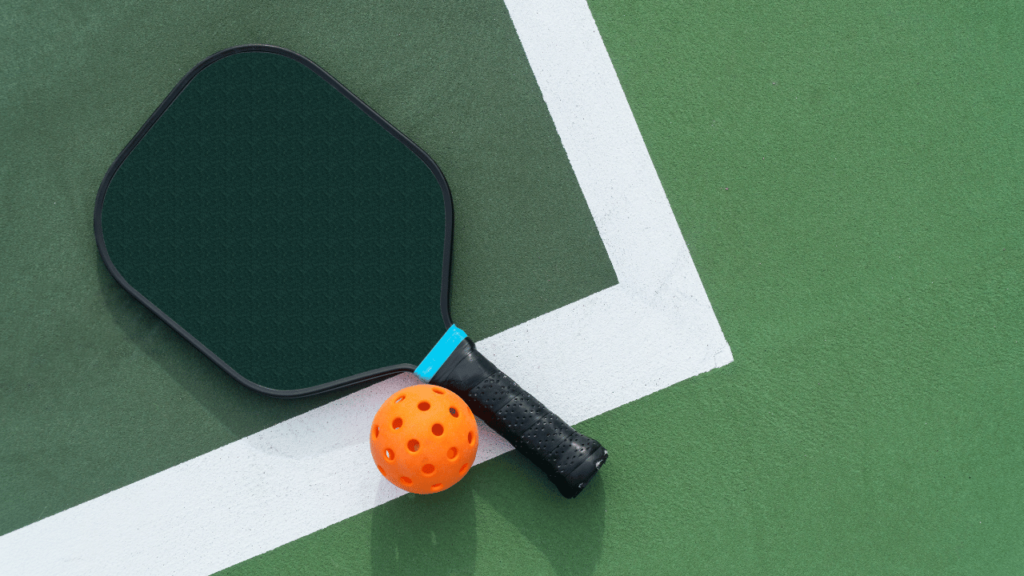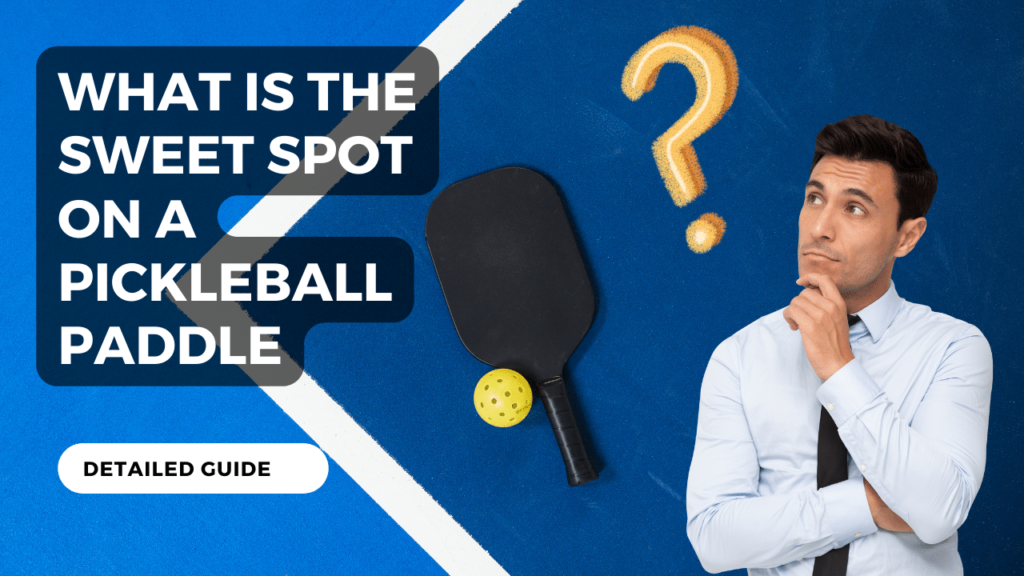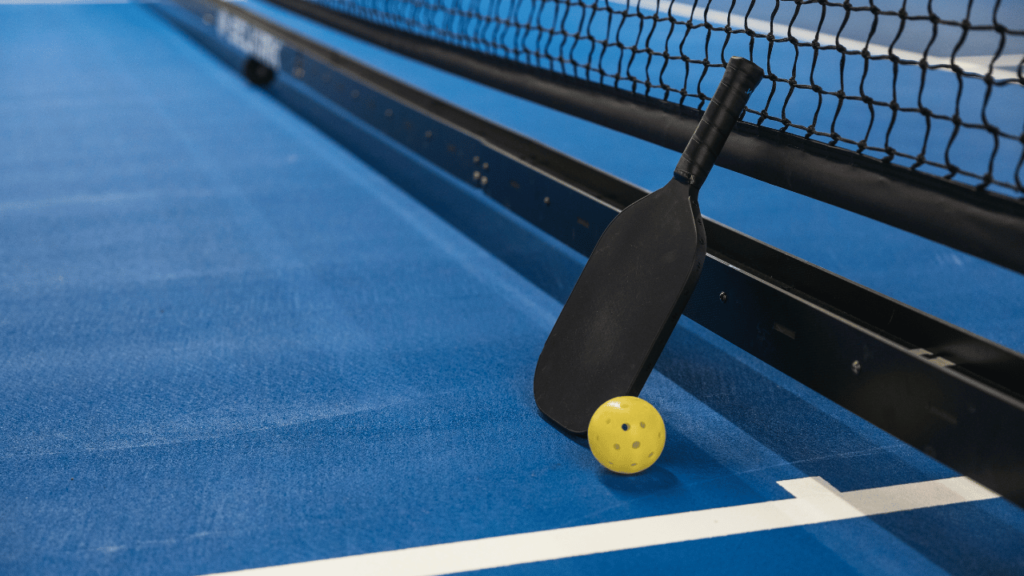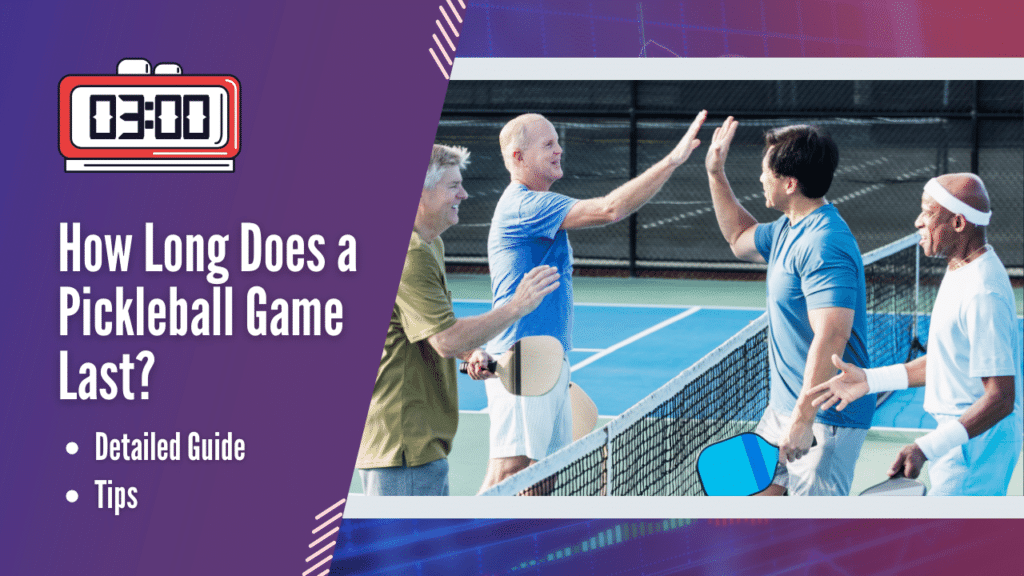Pickleball has taken the world of racket sports by storm, becoming one of the fastest-growing games, attracting players of all ages. Whether you’re a beginner or a seasoned player, understanding the concept of the sweet spot on a pickleball paddle is vital to mastering the game and taking your skills to the next level.
What is the Sweet Spot on a Pickleball Paddle?
Defining the Sweet Spot
The sweet spot on a pickleball paddle is a small, specific area located at the center of the paddle’s hitting surface. It is the spot where the paddle’s design and materials come together to create the perfect blend of power, control, and ball responsiveness. When the pickleball makes contact with the sweet spot, players experience a clean, solid feel, and the ball responds with maximum accuracy and speed.
How Does It Affect Your Game?
The sweet spot is the heart and soul of pickleball gameplay. Hitting the ball off-center, away from the sweet spot, can lead to mishits, loss of power, and reduced control. On the other hand, when you consistently strike the ball at the sweet spot, you gain greater shot accuracy, increased ball control, and improved power in your shots.
Factors Influencing the Sweet Spot
Table: Key Specifications of Pickleball Paddles and Impact on Sweet Spot
| Specification | Description | Impact on Sweet Spot |
| Weight | Lightweight: Easier maneuverability, but potentially less power | Influence on responsiveness and shot control |
| Heavyweight: More power, may sacrifice some maneuverability | Effect on shot power and stability | |
| Length | Longer: Increased reach, potential trade-off in control | Impact on shot reach and potential sweet spot area |
| Shorter: Enhanced control, shorter reach | Affects shot precision and sweet spot size | |
| Width | Wider: Larger sweet spot, but may reduce maneuverability | Influence on overall sweet spot size and paddle control |
| Narrower: More maneuverability, potentially smaller sweet spot | Impact on maneuverability and shot accuracy | |
| Grip Size | Larger: Comfortable hold, potential loss of control | Effect on paddle control and wrist action |
| Smaller: More precision, but may lead to hand fatigue | Influence on shot accuracy and paddle handling |
Paddle Materials
The materials used in constructing the pickleball paddle significantly impact the sweet spot’s feel and performance. Generally, composite paddles offer a larger sweet spot and better vibration dampening, whereas graphite paddles provide a more precise, responsive sweet spot.
Paddle Shape and Size
The shape and size of the paddle also play a crucial role in determining the sweet spot’s location and size. Wide-body paddles tend to have a larger sweet spot, making them more forgiving for beginners, while elongated paddles may offer a more extended sweet spot along the length of the paddle.
Weight Distribution
Proper weight distribution affects how the paddle feels during gameplay and influences the sweet spot’s overall performance. A well-balanced paddle contributes to better maneuverability and more consistent shot-making.
Finding Your Perfect Pickleball Paddle

Understanding Paddle Specifications
Before selecting a pickleball paddle, it’s essential to understand various paddle specifications and how they impact your gameplay. Key specifications include weight, length, width, and grip size.
Weight
Pickleball paddles come in various weights, ranging from lightweight to heavyweight. The weight of the paddle affects how much power you can generate and how quickly you can react to shots.
Length
Paddle length is another critical factor. Longer paddles offer increased reach, while shorter paddles provide more control. It’s essential to find a length that complements your playstyle and allows you to reach balls comfortably.
Width
Paddle width influences the sweet spot’s size and affects the paddle’s overall power and control. Wider paddles offer a larger sweet spot but may sacrifice some maneuverability.
Grip Size
Having the right grip size ensures a comfortable and secure hold on the paddle. An improper grip size can lead to discomfort, affect shot accuracy, and cause injuries.
Trying Different Paddles: Demo Days and Local Clubs
Once you understand the key paddle specifications, the next step is to try different paddles to find the one that suits you best. Many retailers and local pickleball clubs offer demo days where players can test different paddles and get a feel for their playability.
Seeking Expert Advice
Seeking advice from experienced players or certified pickleball instructors can be invaluable in finding the perfect paddle. They can offer personalized recommendations based on your skill level, playing style, and physical attributes.
Mastering the Sweet Spot: Techniques and Drills
Proper Grip and Stance
To consistently hit the sweet spot, it’s essential to maintain a proper grip and stance. The grip should be firm but not too tight, allowing for better control and preventing the paddle from twisting during shots. Position yourself with a balanced stance, knees slightly bent, and weight evenly distributed on both feet to ensure quick movements and fluid shots.
Control and Power: Hitting the Sweet Spot Consistently
Hitting the sweet spot consistently requires practice and focus. When aiming to hit the sweet spot, keep your eye on the ball throughout its flight and adjust your paddle angle accordingly. A slight adjustment can make a significant difference in whether you hit the sweet spot or miss it.
Sweet Spot Drills to Improve Your Game
- The Target Drill: Place targets on the court, and challenge yourself to hit the sweet spot to land the ball accurately on the targets. This drill enhances precision and control.
- The Ball Toss Drill: Have a partner gently toss balls to you, and practice hitting them at the sweet spot’s center. This drill helps develop your timing and consistency.
- The Wall Drill: Stand in front of a wall and practice hitting the ball consistently at the wall’s center, simulating the sweet spot. Focus on your paddle’s position and the ball’s response upon impact.
The Science Behind the Sweet Spot
Table 2: Pickleball Player Skill Levels
| Skill Level (USAPA Rating) | Description |
| 2.0 | Novice player, learning basic rules |
| 2.5 | Beginner, developing skills |
| 3.0 | Advanced beginner, more consistent |
| 3.5 | Intermediate, confident in gameplay |
| 4.0 | Advanced, skilled in various strategies |
| 4.5 | Highly skilled, competitive player |
| 5.0 | Pro-level player, elite in performance |
Physics of Impact: How Sweet Spot Affects Ball Response
The sweet spot’s location on the paddle is determined by the paddle’s construction and design. When the ball hits the sweet spot, the paddle’s materials absorb less energy, resulting in minimal vibration, and transfers more energy back to the ball. This efficient energy transfer leads to a more powerful shot and better ball control.
Research and Studies on Pickleball Paddle Sweet Spots
Researchers and sports scientists have conducted studies to analyze the physics behind the sweet spot. Their findings have provided valuable insights into the sweet spot’s role in optimizing performance and have influenced paddle manufacturers’ designs to improve paddle responsiveness.
Myth-Busting: Common Misconceptions about Sweet Spots

Bigger Is Always Better: The Truth about Paddle Size
While it may seem logical to assume that a larger paddle size equates to a larger sweet spot, it’s not necessarily the case. A larger paddle may have a more extensive sweet spot area, but it can also lead to reduced maneuverability and control. Finding the right balance between paddle size and sweet spot size is essential for overall performance.
Lighter Paddles for Greater Maneuverability?
Some players believe that lighter paddles offer better maneuverability and a larger sweet spot. While lighter paddles can provide improved maneuverability, it’s essential to find a paddle weight that suits your playing style and doesn’t compromise power or stability.
The Evolution of Pickleball Paddles
Historical Development
Pickleball paddles have come a long way since the sport’s inception. Initially, paddles were made of wood, offering limited sweet spot technology. As the sport evolved, modern materials like composite and graphite were introduced, enhancing sweet spot performance and overall gameplay.
Current Trends in Pickleball Paddle Design
Today, paddle manufacturers continuously innovate to optimize sweet spots, experimenting with advanced materials, paddle shapes, and surface textures to enhance player performance. New technologies and materials allow players to find paddles tailored to their specific needs and preferences.
Personal Stories: Athletes and Their Sweet Spot Journey
Interviews with Pickleball Players
Hearing from professional pickleball players and enthusiasts about their sweet spot journey can be inspiring and educational. Many players share their experiences of discovering their perfect paddle, how it improved their game, and how it impacted their overall performance and enjoyment of the sport.
How Finding the Sweet Spot Transformed Their Game
These personal stories highlight the profound effect that finding the sweet spot can have on a player’s pickleball journey. It underscores the importance of choosing the right paddle and dedicating time to develop consistency and accuracy in hitting the sweet spot.
Frequently Asked Questions (FAQs)
What is a sweet spot on a pickleball paddle?
The sweet spot on a pickleball paddle is a specific area on the paddle’s hitting surface where optimal performance is achieved. When the ball makes contact with the sweet spot, players experience a clean and solid feel, resulting in maximum power, control, and accuracy in their shots. Hitting the sweet spot consistently is essential for elevating one’s gameplay in pickleball.
How do you hit the sweet spot in pickleball?
Hitting the sweet spot in pickleball requires proper technique and timing. To do so, focus on the following:
Proper Grip and Stance: Maintain a firm but not too tight grip on the paddle, and position yourself with a balanced stance, knees slightly bent, and weight evenly distributed on both feet.
Eye on the Ball: Keep your eye on the ball throughout its flight, and adjust your paddle angle to meet the ball at the center of the sweet spot.
Practice and Consistency: Regularly practice hitting the ball with different strokes, and engage in drills specifically designed to improve sweet spot accuracy.
What does sweet spot mean in pickleball?
In pickleball, the sweet spot refers to the area on the paddle’s surface where the ball’s impact results in optimal power, control, and responsiveness. Hitting the sweet spot consistently allows players to execute accurate and powerful shots, contributing to an enhanced overall performance on the pickleball court.
What is a dead spot on a pickleball paddle?
The dead spot on a pickleball paddle is an area on the paddle’s hitting surface where ball response is reduced. When the ball hits the dead spot, players may experience a less solid and less powerful shot compared to hitting the sweet spot. Avoiding the dead spot and aiming for the sweet spot is crucial for better shot control and efficiency.
Why do they hit soft in pickleball?
Hitting soft in pickleball, often referred to as a “dink” shot, is a strategic technique used to control the game and set up advantageous plays. By hitting the ball softly, players create a low, slow shot that stays close to the net, making it challenging for opponents to return aggressively. Soft shots can force opponents into difficult positions and open up opportunities for offensive plays.
What does pickleball 2.5 mean?
In pickleball, the term “2.5” refers to a player’s skill level or rating. The United States of America Pickleball Association (USAPA) uses a rating system from 2.0 (novice) to 5.0 (advanced) to classify players based on their skill and experience. A 2.5-rated player typically has limited experience in the game and is still developing basic skills and understanding of pickleball strategies.
What is the difference between the sweet spot and the dead spot on a paddle?
The sweet spot refers to the area on the paddle’s surface where optimal power and control are achieved. In contrast, the dead spot is an area where the paddle’s responsiveness is reduced, leading to less power and control when hitting the ball.
Can I improve my game by enlarging the sweet spot?
While a larger sweet spot can provide some benefits, it’s crucial to find a paddle that aligns with your playing style and skill level. Consider factors such as weight, paddle shape, and material in addition to the sweet spot size.
Is the sweet spot location the same for all paddle brands?
The sweet spot’s location may vary slightly among different paddle brands and models. Each manufacturer designs their paddles with unique features and technologies that influence the sweet spot’s performance.
Can beginners benefit from a larger sweet spot?
Beginners may find paddles with a larger sweet spot more forgiving and easier to use as they develop their skills. However, it’s essential to strike a balance between sweet spot size, paddle weight, and maneuverability.
How often should I replace my pickleball paddle?
The lifespan of a pickleball paddle depends on how frequently it is used and the materials used in its construction. As a general guideline, players should consider replacing their paddle when they notice significant wear or a decline in performance.
Conclusion
The sweet spot on a pickleball paddle is the gateway to improved gameplay and enjoyment of the sport. Armed with the knowledge of how the sweet spot affects your shots and the factors influencing it, you are now better equipped to select the perfect pickleball paddle that aligns with your playing style and preferences. Embrace the sweet spot, and unlock your full potential on the pickleball court. Remember, practice, dedication, and the right paddle can make all the difference in taking your pickleball game to new heights.



